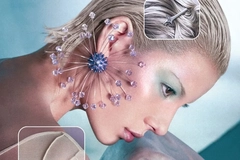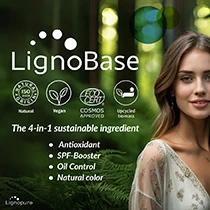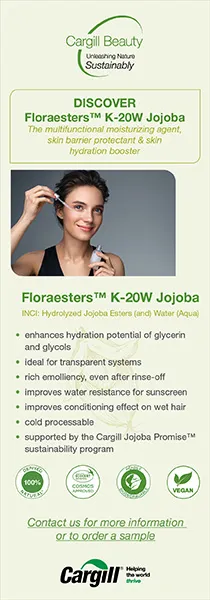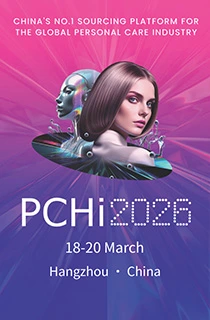Researchers urge alternatives to prevalent toxic cosmetic pigments, UV filters and preservatives

09 Aug 2022 --- Commonly used pigments, UV filters and preservatives can be “indispensable” to cosmetic formulations, however, they can also be toxic by affecting human metabolism and internal organs, flag US and China-based researchers.
Preservatives are widely used to prevent bacterial and fungal contamination in cosmetics. UV filters are used for skin protection and anti-aging purposes, whereas pigments are used in eye shadow, lipstick, blush and other color cosmetics.
The researchers at the University of California, Santa Barbara, Guangdong Technion-Israel Institute of Technology and Rensselaer Polytechnic Institute reviewed the use and toxicity of preservatives like parabens, benzalkonium chloride (BAC) and chlorphenesin.
Ecological and health threats
Since pigments, UV filters and preservatives are challenging to replace in cosmetics, the researchers underscore that future research must focus on scaling chemical alternatives that are harmless to humans.
“Additionally, many compounds are bioactive, ecologically persistent and have the potential to bioaccumulate, posing a major hazard to the environment and human health,” they underscore. TiO2 and ZnO nanoparticles in sunscreens have been found to cause skin cell damage.
TiO2 and ZnO nanoparticles in sunscreens have been found to cause skin cell damage.
“New techniques and approaches are necessary to address this issue genuinely.”
The discussion comes as the beauty and personal care space in Europe faces a wave of regulatory changes and chemical bans, partly due to conflicting opinions on animal testing by the ECHA and the hazard-based approach to chemical safety undertaken by the European Union.
Parabens and preservatives on human health
Zeroing in on parabens, the researchers stress that these compounds can cause harm by causing infertility, spermatogenesis, adipogenesis, endocrine disruption, carcinogenesis and perinatal exposure effects.
Parabens as a group of parahydroxybenzoates or esters of parahydroxybenzoic acid. Previous studies found that personal care products can induce pubertal onset in children.
“Propyl parabens would cause earlier genital development of boys and earlier menarche of girls while methylparaben would cause pubic hair development and menarche of girls,” say the researchers.
Next to parabens, BAC is an antiseptic and antimicrobial preservative frequently used in skin antiseptic and personal care products. BAC was found to lead to cell membrane damage, which can cause intracellular leakage of contents.
According to researchers, BAC toxicity can also induce apoptosis, decreasing cell viability and causing cell death. It is commonly used on eye drops and may damage the cornea.
Heavy metals with harmful effects
Pigments are essential ingredients as they bring colors. However, some pigments are made or contain heavy metals.
For instance, cadmium and chromium heavy metals are commonly used in small amounts for color cosmetics. However, these are harmful when they enter the human body.  Some pigments contain heavy metals like cadmium and chromium.
Some pigments contain heavy metals like cadmium and chromium.
“Cadmium decreases cell viability, enhances reactive oxygen species (ROS), and induces apoptosis,” warn the researchers. ROS causes cellular damage. Even though the amount used in cosmetics is not in high amounts, long-term use can have adverse effects on the body, say the researchers.
Hexavalent chromium, like cadmium, can also affect human metabolism and the functioning of organs. Studies have also found it to be carcinogenic, cause DNA damage, disrupt cell cycle regulation, cause morphological changes and affect energy metabolism, to name a few.
“Blood cells in the organism are also susceptible to hexavalent Chromium, and under the influence of Chromium, blood parameters can be altered, leading to several diseases,” they continue.
Sunscreen skips cellular protection
The researchers identify zinc oxide (ZnO) and titanium dioxide (TiO2) as two popular inorganic UV filters used in sunscreens.
TiO2 and ZnO are known to leave a white cast after application, so sunscreen formulators use nanosized variants of these chemicals to avoid the white cast and create a transparent and fluid application.
“Because of their tiny size, capacity to circumvent immunologic defense systems, complex with proteins, and stimulate ROS production, nanoparticles in sunscreens provide a potential toxicity risk,” flag the researchers.
TiO2 nanoparticles in sunscreens have been found to cause skin cell damage, with the potential to result in DNA skin cell mutations that can be passed to daughter cells, resulting in tumor formation.
Additionally, studies have found that ZnO nanoparticles have cytotoxic effects on various mammalian cell lines – causing toxicity to cells in the epidermal barrier and organs via systemic circulation.
“Even at a relatively low concentration of 10 𝜇g/mL, ZnO nanoparticles proved capable of inducing apoptosis in human dermal fibroblasts,” they continue.
Last week, Banana Boat recalled multiple sunscreen spray batches tainted with cancer-causing benzene.
Furthermore, the European Commission published an amended regulation regarding a limit to the use of the UV filters Benzophenone-3 and Octocrylene in cosmetic products due to endocrine-disrupting properties flagged by the Scientific Committee on Consumer Safety.
Chemical sunscreens not only cause damage to human cells but are also known to cause damage to aquatic environments. Research is urging formulators to cut chemical cocktails to conserve marine life.
A study by Stanford University previously concluded that the commonly used sunscreen ingredient oxybenzone could be converted into a potentially deadly phototoxin inside anemone and coral cells when exposed to sunlight, resulting in increased damage and maybe death.
By Venya Patel












